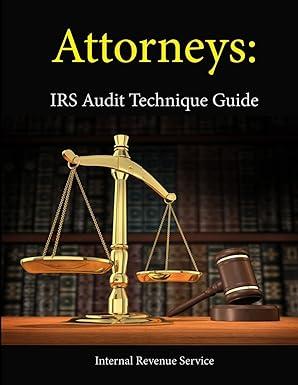Question
The Department of Chemistry at the University conducts chemical analysis of water, soil and industrial wastes as mandated by the Environmental Protection Agency (EPA). The
The Department of Chemistry at the University conducts chemical analysis of water, soil and industrial wastes as mandated by the Environmental Protection Agency (EPA). The department customers include local government bodies, who are responsible for insuring that local water supplies are safe for drinking and manufacturing companies, who must verify that the wastes that they release into water or landfills comply with strict regulatory standards. The Chemistry department does not have the technology to run the necessary test, so it will have to buy several machines called gas chromatographs. Two different types of gas chromatographs are available, both of which have a useful operating life of about six years. One type, Type A, is less expensive than the other, and is cheaper to operate. The other type, Type B, costs a great deal more, but in principle it can be used to perform many additional kinds of chemical tests. The HOD of the department believes that over time he could find new customers who would pay for the additional types of tests that the Type B chromatographs can perform. At the end of its life , the Type B machine must be removed from department facility at great cost, a coast large enough that in the final year of operating the Type B machines, the net cash flow is negative. The estimated cash flows associated with each type of machine appear below:
| Year | Type A Chromatographs | Type B Chromatographs |
| 0 | -$1000 000 | -$3200 000 |
| 1 | 450 000 | 500 000 |
| 2 | 350 000 | 550 000 |
| 3 | 250 000 | 1000 000 |
| 4 | 200 000 | 1500 000 |
| 5 | 150 000 | 2000 000 |
| 6 | 125 000 | -600 000 |
The HOD has requested you to provide analysis to help him determine which chromatograph to purchase. He is particularly interested in knowing how quickly each machine will pay back its initial cost and the rate of return that each machine offers. He tells you that if he does not spend money on new gas chromatographs, he will probably replace some existing equipment in the lab, and he would expect to earn a return of about 10% on that type of investment. As you sit down to begin your analysis, a number of questions come to mind.
- What is the payback period of each machine? (12 marks)
- What are the pros and cons focusing on payback as a decision criterion in this particular case?
(3 marks)
- What is the internal rate of return provided by each machine? (10 marks)
- What problems could arise if the HOD chooses the machine with the highest internal rate of return?
(5 marks)
Step by Step Solution
There are 3 Steps involved in it
Step: 1

Get Instant Access to Expert-Tailored Solutions
See step-by-step solutions with expert insights and AI powered tools for academic success
Step: 2

Step: 3

Ace Your Homework with AI
Get the answers you need in no time with our AI-driven, step-by-step assistance
Get Started


